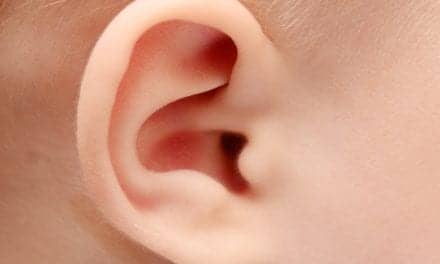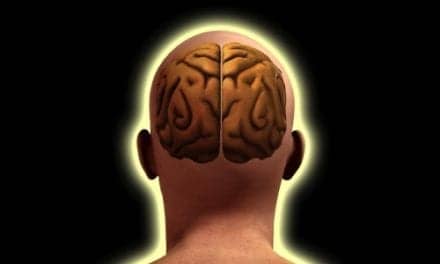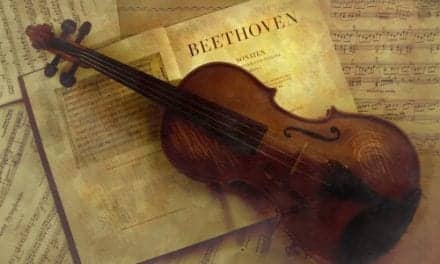Tech Topic | December 2022 Hearing Review
Industry experts anticipate Bluetooth Auracast™ broadcast audio will become the next-generation assistive listening system
By Chuck Sabin, Senior Director of Market Development at the Bluetooth SIG
At all life stages, communication and good hearing health connect us to each other, our communities, and the world. Public hearing assistance is critical for people with hearing loss. Background noise is a real challenge. One benefit of an assistive listening system is that it helps curtail background noise, allowing individuals to better access the sound source they want to hear, whether it is a speaker at a convention or a person at a service counter.
While current assistive listening systems (ALS) have provided great benefits to people with hearing loss, several challenges have hindered their deployment, including limitations in function and performance, the cost of installation and maintenance, and a lack of secure and private communications.
Assistive Listening Today
For years, three types of assistive listening systems have been used to support people with hearing loss: FM, infrared, and hearing loop systems. Though the sound quality can be good, FM and infrared systems require individuals to borrow a receiver from the venue. It is impossible for a user to bring their own device, and having to acquire a venue-specific device to gain audio accessibility can lead to feelings of stigmatization. Richard Einhorn, a consultant at Einhorn Consulting, LLC, noted that there are trade-offs to using FM and infrared systems, with the main one being that you must identify yourself as a person with hearing loss, which is typically undesirable for those with hearing loss.
The third option is a hearing loop. Hearing loops are one of the more commonly used solutions to support hearing loss in public venues and are the closest thing to a standard for assistive listening. Telecoils built into hearing devices allow users to access a hearing loop without needing a separate receiver. Unfortunately, not all hearing aids have telecoils, and hearing device wearers are not necessarily aware that they have a telecoil in their hearing devices. In some cases, a telecoil is available in the hearing device, but it has not been programmed for use.
Hearing device users who have built-in, programmed telecoils find they are easy to use. A simple button push or flip of a switch on the hearing device provides access to the audio signal. But loop systems have several limitations. According to Einhorn, one disadvantage for the consumer is that the signal is in mono, and there are times when you want to listen in stereo. Another issue with hearing loops, Einhorn notes, is that unless the venue installed the hearing loop when the building was constructed, it’s extremely expensive to reconfigure the building for hearing loops.
Nick Hunn, CTO of WiFore Consulting, noted that hearing loops have several restraints. It can be expensive to install, and, to hear it, you must be within the confines of the loop. Because it’s a fairly expensive installation, availability is largely driven by a country’s regulations. The hope is that the addition of Auracast™ broadcast audio will help democratize access.
Jeff Solum, a wireless system architect with Starkey Hearing Technologies, points out that with Auracast™ broadcast audio, you can mount just a small gateway, like you would a WiFi modem in a home, classroom, church, or auditorium, and fill the entire space with a higher quality wireless audio. “The experience is going to be much better, much broader, and it’ll be deployed much faster when people start picking up the standard and deploying it,” said Solum.

Assistive Listening Tomorrow
Industry experts anticipate Auracast™ broadcast audio will become the next-generation assistive listening system. There’s a good probability that this will eventually come to fruition, but complete market saturation could take years, maybe even decades, to realize. In the interim, its ability to function in tandem with existing assistive listening technologies will enhance accessibility for a wider range of people with hearing loss.
The low cost of installing Auracast™ broadcast audio will be a big benefit. In many regions, legislation has driven the deployment of an assistive listening system. If systems can be deployed at a lower cost, the benefits they provide visitors in public spaces will incentivize venues to install them. Thomas Olsgaard, VP of hardware platforms for GN ReSound, points out that hearing loop systems require a wire running through the walls, floor, or ceiling, meaning someone will have to install and maintain it. With Auracast™ broadcast audio, there is the option to put a broadcaster on the wall, hook it up, and it works – increasing ease of use.
Auracast™ broadcast audio will be highly reliable and relatively inexpensive to deploy, especially compared to the costs associated with a hearing loop retrofit. “The exciting thing about LE Audio,” according to Einhorn, “is that it addresses almost all, if not all, of the limitations of the current technologies. If you have a venue that supports Auracast™ broadcast audio, it is possible that Auracast™-enabled hearing aids can be designed so that all a consumer would need to do is flip a switch on their hearing aid just the way they used to do with loops, and they will be connected to stream it all.”
Until the technology becomes widely available and accessible, the coexistence of Auracast™ broadcast audio and existing assistive listening systems is critical for hearing aid users. The International Federation of Hard of Hearing People (IFHOH) recommends that manufacturers of hearing aids and cochlear implants continue to integrate telecoils into their products. Recently, the IFHOH published a declaration that states, “it is important to have both telecoil and Auracast™ technologies in hearing aids and cochlear implants until most users will feel they can rely on Auracast™ broadcast audio.” IFHOH recognized that one of the most important and impactful promises of Auracast™ broadcast audio is to assist hard-of-hearing individuals to hear better in venues where hearing aids and cochlear implants are insufficient to function. The IFHOH said it “foresees a world where FM, infrared, and hearing loop systems (including those found in taxis, ticket counters, airports, theatres, etc.) will function for the foreseeable future alongside Auracast™ systems.”
Going Beyond Assistive Listening
Overcoming the challenges of traditional assistive listening technologies by using a familiar, proven technology ubiquitous in most consumer audio devices will provide the added benefits of enabling broader deployment and increasing the availability of assistive listening for people with hearing loss. It will also expand the applicability of this type of audio access to consumers with all levels of hearing health. Rasmus Abildgren, principal engineer with Bose explains that with Auracast™ broadcasts, there is an opportunity to create an assistive listening system that can benefit not only those with hearing loss but also those who can’t hear what is being presented. Auracast™ broadcast audio is not only beneficial to those using hearing aids, it is also beneficial to the general public.
Public locations – including conference centers, movie theaters, transportation centers, places of worship, and more – will deploy Auracast™ broadcast audio to promote better living through better hearing for everyone. Linda Kozma-Spytek, consultant and professional adviser on technology to the Hearing Loss Association of America, notes that the concept of providing an interoperable, universal, and widely deployed service is something the hearing loss community has not really had access to with other assistive listening systems. “The existing solutions also form connectivity silos because they are separate from and incompatible with the wireless connectivity used with general consumer audio electronics. Removing those connectivity silos puts us on the path to more inclusive communication access for people with hearing loss,” said Kozma-Spytek. “Delivering ubiquitous, universal audio connectivity for people using hearing devices and mainstream audio products alike is now in the realm of possibility.”

Citation for this article: Sabin C. Using Bluetooth technology to solve assistive listening challenges Hearing Review. 2022;29(12):12-13.





